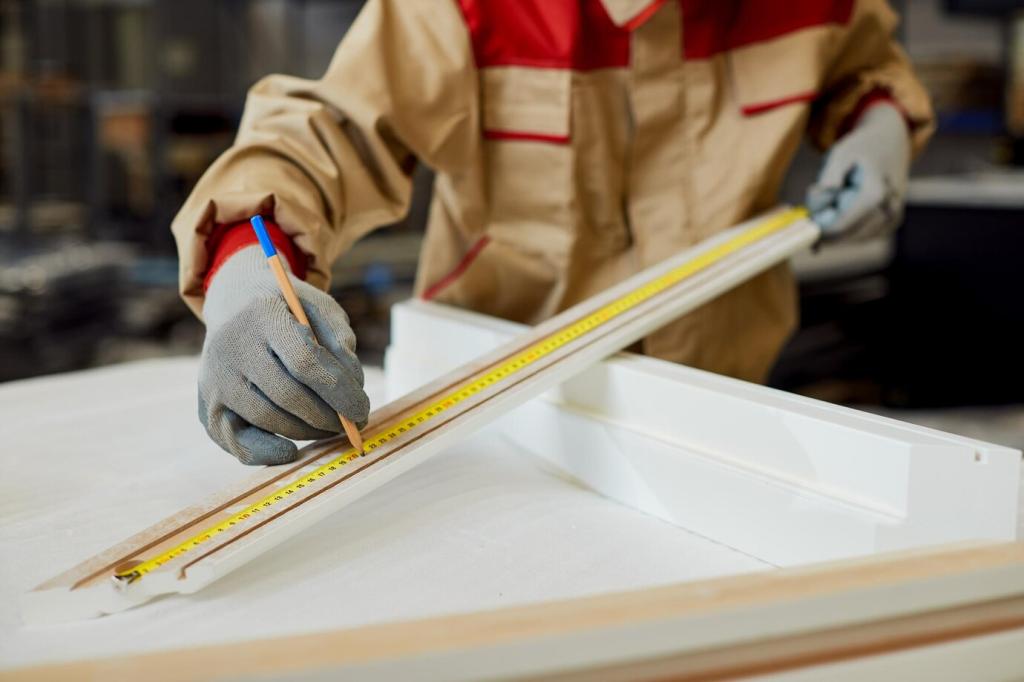Choosing Sustainable Home Remodeling Materials: Build Better, Live Healthier
Chosen theme: Choosing Sustainable Home Remodeling Materials. Welcome! Let’s explore smart, planet-friendly material choices that elevate comfort, cut toxins, and look beautiful. Join the conversation, ask questions, and subscribe for weekly deep dives and real-life remodel wins.



Start with Principles: How to Evaluate Sustainable Materials
Look beyond the purchase price: assess extraction, manufacturing, transport, use, and end-of-life. Choose options with Environmental Product Declarations showing lower embodied carbon, and favor long-lasting products that reduce replacement frequency and waste over decades.
Start with Principles: How to Evaluate Sustainable Materials
Trust independent labels over vague marketing. FSC for wood, Cradle to Cradle, GREENGUARD Gold, and ENERGY STAR each verify different sustainability aspects. Ask suppliers for documentation, not brochures, and compare products using clear, third-party criteria.
Health Matters: Materials That Protect Indoor Air

Low-VOC Finishes and Adhesives
Select zero- or low-VOC paints, primers, stains, and adhesives to reduce off-gassing. Confirm VOC content in grams per liter, and pair with proper curing time and ventilation to keep odors minimal and indoor air quality strong.

Composite Wood Without Worry
For cabinets and shelving, look for TSCA Title VI compliant or NAUF (No Added Urea-Formaldehyde) panels. These options drastically cut formaldehyde emissions while maintaining durability, finish quality, and design flexibility in kitchens, offices, and built-ins.

Finishes That Breathe and Last
Natural oil finishes, mineral paints, and limewash offer breathable, beautiful surfaces with fewer synthetic additives. They patina gracefully, can be renewed instead of fully replaced, and help regulate humidity in older homes and new builds alike.

Room-by-Room: Practical Picks for Kitchens, Baths, and Floors
Consider recycled glass or terrazzo counters, FSC-certified cabinet boxes, and formaldehyde-free plywood. Durable, repairable finishes reduce waste, while high-quality hardware extends lifespan. Ask for third-party documentation on adhesives and finishes used inside cabinet interiors.
Room-by-Room: Practical Picks for Kitchens, Baths, and Floors
Choose porcelain tile with high recycled content, cement boards with reliable VOC profiles, and grout with low water absorption. Proper waterproofing and ventilation stretch lifespans, preventing mold, premature replacements, and the carbon costs of frequent remodels.

Humid and Coastal Environments
Favor moisture-tolerant substrates, stainless or hot-dip galvanized fasteners, and finishes rated for salt air. Ventilated rainscreens behind siding prevent trapped moisture, while durable fiber-cement or responsibly sourced, rot-resistant species extend exterior lifespans.
Cold Climates and Insulation Strategy
Cellulose, wood fiber, and mineral wool insulations deliver strong performance with lower embodied carbon than many foams. Address air sealing and thermal bridging, and consider triple-pane windows to reduce heating loads and material stress over time.
Hot, Dry Regions and Heat Resilience
High-albedo roofing, radiant barriers, and ventilated attics cut cooling demand. Choose exterior finishes that resist UV degradation, and prioritize shading strategies, which allow interior materials to last longer without constant thermal expansion and contraction.



Circular Thinking: Salvage, Recycling, and Design for Disassembly
Deconstruction Over Demolition
Careful removal preserves doors, trim, hardwood, and fixtures for reuse. Partner with salvage organizations and schedule extra time; the payoff is reduced landfill waste, tax benefits in some regions, and materials with irreplaceable character and history.
Recycled Content that Performs
Choose steel with high recycled content, recycled aggregate concrete mixes, and tiles made from reclaimed glass. Ask suppliers for documented percentages and performance specs to ensure eco-friendly choices still meet structural and durability requirements.
Design for Future Repairs and Upgrades
Use mechanical fasteners where possible, modular layouts, and accessible service chases. When materials can be removed without damage, your home becomes adaptable, lowering future renovation waste and making sustainable choices easier for the next owner.
Stories, Lessons, and Your Action Plan
After replacing worn carpet with cork flooring and low-VOC paint, one family noticed fewer odors and easier cleaning within weeks. Their kids’ playroom felt warmer underfoot, and maintenance dropped to simple damp mopping and occasional touch-ups.
Stories, Lessons, and Your Action Plan
A builder we trust salvaged hundred-year-old fir joists, then milled them into stair treads. The result was stunning, structurally sound, and carried a story guests asked about—proving sustainability can be the most beautiful design choice.


